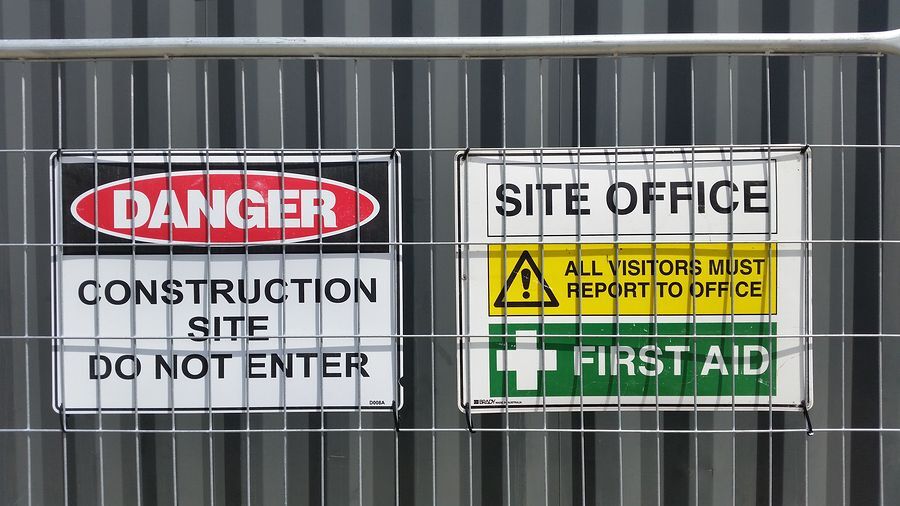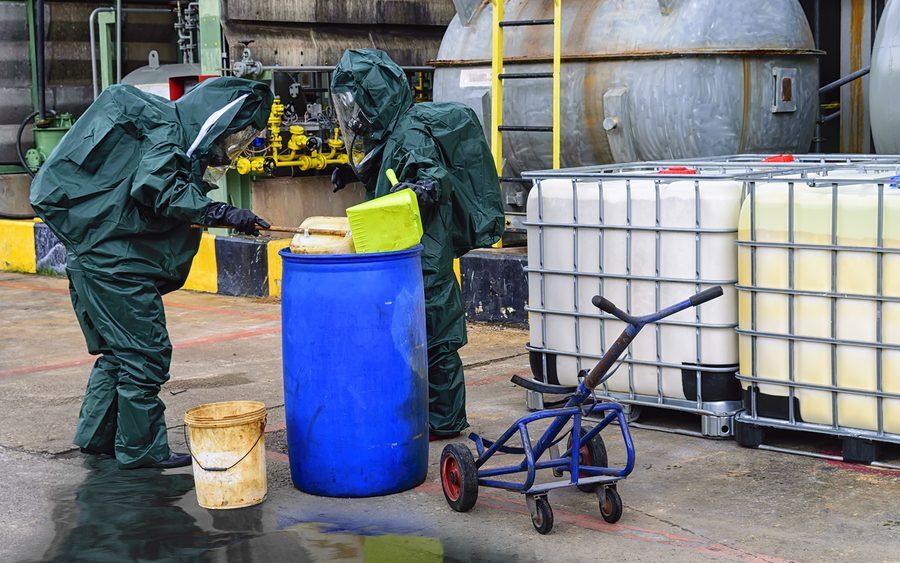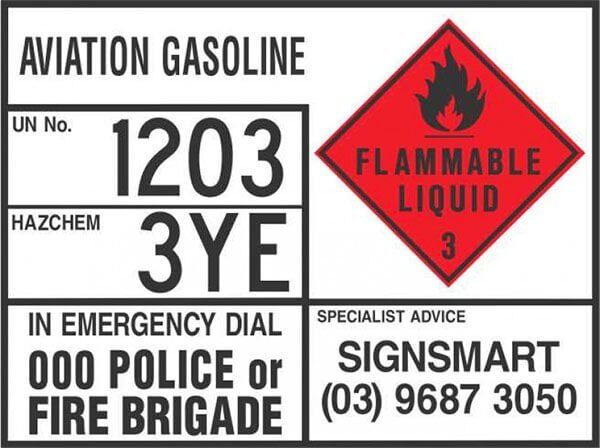When it comes to workplace hazards, chemicals are at (or at least, pretty close to) the top of the list.
Just last month, a medical facility in Sydney reported a chemical spill that required the attention of the police, fire and rescue NSW. Specifically, a container of perchloric acid was discovered in the facility that had high explosive potential, putting the facility, the staff, and the surrounding areas in considerable danger.
Luckily, nobody was hurt – what this does illustrate however is the risk that comes with chemicals, and why it’s so important that you take steps to minimise risks at work!
Whether you manufacture chemicals, work with them or simply store them, a robust safety system is essential in order to minimise the risk to you, your team as well as visitors to your site.
Naturally, workplace safety signs like hazchem signs, emergency information panels and dangerous goods labels an important start.
However, they aren’t the only ways you can reduce chemical risks at work…
5 must-know tips to minimise chemical risks at work
Before you start any new business process that requires the use and storage of hazardous chemicals or take your first delivery of chemicals, you’ll need to make sure you’re ready.
And that means taking steps to minimise chemical risks.
While the exact steps you’ll need to take depend on what you’re storing, there are a couple of constants that you should be taking on board, no matter what chemicals you deal with…
1) Lock and store in a well-ventilated area, even if the SDS doesn’t say it has to
Not all chemicals give off strong fumes or noxious odours – that said, it’s good practice to treat each of them as if they do!
A safe working environment requires clean air and well-ventilated spaces. And that means making sure that your chemical storage allows for these fumes to escape before they cause:
- Irritation
- Breathing issues
- Explosion
A well-ventilated space quickly allows any strong smells, vapours and gases to escape, minimising the risk of suffocation.
In some cases, it can even prevent an explosion.
Certain hazardous chemicals can create fumes which dramatically increase the risk of fire or explosion. In these cases, these fumes need to be ventilated in order to reduce the explosion risk.
Finally, in the event of a leak, a well-ventilated system can blow chemical smells out of the area, making it safer to clean up.
2) Make sure everyone knows what they need to do
Really, this is a must regardless of what chemicals you work with!
Hazard communication training is a must in every company, especially for those who work with them on the daily. That means:
- Having processes for how to use, dispose, and store chemicals safely
- Informing them about the chemicals they work with. As well as the risks and hazards
- Making sure they have access to copies of substance Safety Data Sheets (SDS)
- Know the emergency response plan off by heart
Most importantly, it’s crucial that staff go through a refresher every once in a while.
Memories fade, and people can get complacent. That’s why it’s important to schedule emergency spill drills, or organise periodic safety briefs to make sure everyone knows what they need to do.
Finally, make sure that your team is informed every time these are updated!
(Need a quick way of warning your team about the hazards your chemicals pose? Workplace safety signs like dangerous goods signs and labels are just what you need!)
3) Keep Personal Protective Equipment (PPE) on-site even if they aren’t needed
Even after the mandatory mask order is rescinded, it’s important that your team has the PPE they need to safely deal with chemicals.
Specifically, we’re talking about things like:
- Goggles
- Masks and respirators
- Gloves
- Thick, rubber-soled boots
- Aprons and smocks
With the right gear, you can protect your team from chemical exposure, eye irritation, skin damage, respiratory tract infection and more.
Again, it’ll come down to the chemicals in question, so be sure to check the safety data sheet for more information (more on that later).
Even if the SDS doesn’t mandate these pieces of PPE, it’s worth keeping them on-hand anyway. For starters, it can help in the event of an emergency like a spill.
Another overlooked upside is that it can also help your employees feel more comfortable while working!
Some employees might be extra sensitive to chemicals that would otherwise not require full PPE, or they may simply like the extra security. Either way, you should offer them the option of gearing up anyway (even if it isn’t strictly needed).
4) Ensure that Material data sheets are stored with the chemicals properly
Under the Globally Harmonised System of Classification and Labelling of Chemicals (just GHS for short), Australian chemical manufacturers are required to provide safety data sheets to all of their recipients.
These sheets are key – they give you all the information you need to keep your team safe around hazardous chemicals:
- Storage and safe handling procedures
- Emergency response
- Chemical ingredients and identity
- Disposal procedures
All of this stuff forms the groundwork for your safety plan, as well as all the measures you need to take to keep your team safe. With regard to your workplace specifically, you’ll want to keep copies available for staff to access so that your team knows what they can do to protect themselves.

5) Label all chemicals properly
Specifically, we’re talking about workplace safety signs like:
Step one in staying safe around chemicals and reducing chemical risks is ensuring that everyone knows what they’re dealing with.
And that starts with signage.
Each of these signs is crucial in ensuring that your team stays safe around hazardous chemicals, whether it’s hazchem signs and GHS labels hung right outside chemical storage zones, dangerous goods signs stuck to containers, or emergency information panels for outbound deliveries.
While OHS laws only require workplace safety signs to be hung up in certain areas, we recommend going above and beyond. If it makes sense for a sign to be there, we suggest installing one!
Of course, you’ll first need to find somewhere that supplies the signs you need, including custom workplace safety signs if you deal with rarer, less-common substances…
Order workplace safety signs online with Signsmart!
So you need signs to complete your safety system and minimise chemical risks. Luckily, we have just what you need to keep everything and everyone safe in your workplace!
Our online sign shop supplies you with all the workplace safety signs you’ll ever need, ranging from signs for common chemicals to custom-made signs for rarer chemicals and substances.
Whatever it is, you can find it at our online sign shop.
Our team are experts in all things hazchem. In addition to telling you which hazchem signs, emergency information panels and dangerous goods labels you need, we can also help guide you through OHS laws surrounding chemical storage, helping you stay compliant.
No matter what you handle or your industry, our workplace safety signs are just what you need to ensure that your team is safe, and that you don’t end up like the facility we mentioned at the very beginning.
Get the signs you need today – call us on (03) 9687 3050 or send us a message and we’ll be in touch with you immediately.
You can also visit us for hazchem signs in Melbourne: pop into our office at 122 Whitehall Street, Footscray, VIC 3011.







